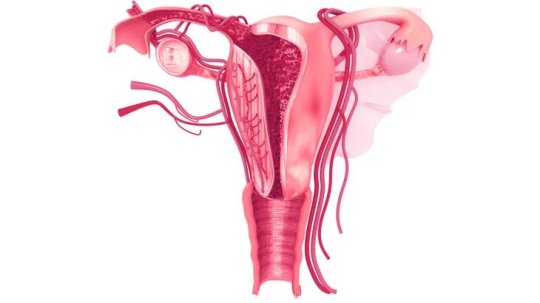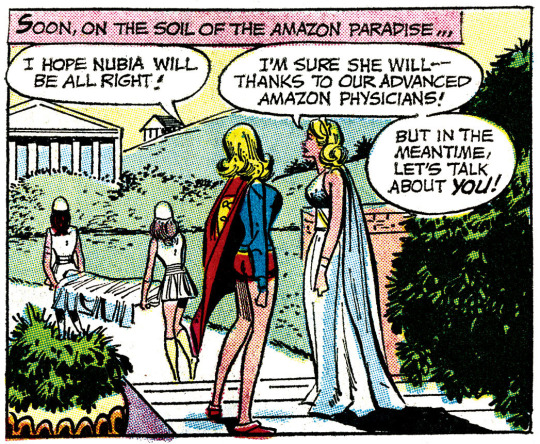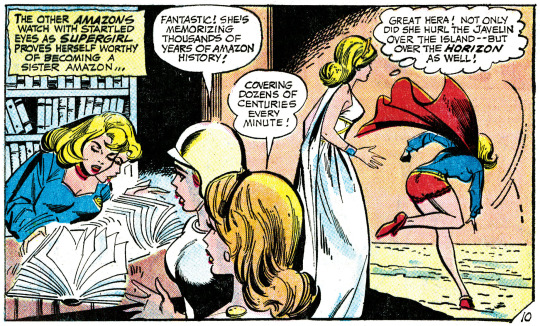#Asherman’s
Explore tagged Tumblr posts
Text

Gary Seven, Roberta Lincoln and Isis by George Pérez
#gary seven#roberta lincoln#isis#star trek#george perez#dc comics#modern age#whos who#allan asherman
15 notes
·
View notes
Text
Allan Asherman, longtime DC staffer and keeper of the DC library has passed away. On a personal level, Asherman will always hold a place in my heart as the voice of Superman in the Fisher Price Superman and Justice League Book and Tape productions. Take a listen here:
youtube









7 notes
·
View notes
Photo







Beowulf 6 Issue Complete Set (1975) by DC Comics
Written and drawn by various.
#Beaowulf#1975#DC Comics#Comic Book Set#Ricardo Villamonte#Dick Girodano#MIchael uslan#Etsy#Vintage Comics#Comic Books#Comics#Allan Asherman#Nan-Zee#Bruzz Solomon#Ric Estrada#Wiglaf#Hondscio#Unferth#Grendel#The Shaper
2 notes
·
View notes
Text

29.11.2022
Another Star Trek book - I've been buying quite a few lately, so I will read them over the next month or two
1 note
·
View note
Text

Discover how Audubon Fertility can help with Asherman's syndrome, a condition characterized by scar tissue in the uterus that may cause infertility or menstrual irregularities. Our experienced specialists provide comprehensive evaluation and treatment options to restore uterine health, including advanced procedures and personalized care plans. Learn more about Asherman's syndrome and regain your fertility and well-being with Audubon Fertility's compassionate support.
0 notes
Text
Asherman’s Syndrome Market Projected for Significant Growth by 2032, According to DelveInsight

DelveInsight's comprehensive report, “Asherman’s Syndrome Market Insights, Epidemiology, and Market Forecast-2032,” sheds light on the evolving landscape of Asherman’s Syndrome, offering insights into historical and forecasted epidemiology and market trends in the United States, EU5 (Germany, Spain, Italy, France, and the UK), and Japan.
Market Overview and Key Players
The Asherman’s Syndrome market is anticipated to experience steady growth, driven by advancements in treatment practices and an increase in patient awareness. Leading companies actively engaged in this market include:
Key Players: Allergan, Sanofi, Pfizer, GlaxoSmithKline, Novartis AG, Bayer AG, Eli Lilly, Merck, Roche, Mylan N.V., Merck KGaA, Melinta Therapeutics LLC, Basilea Pharmaceutica Ltd., Tetraphase Pharmaceuticals, Paratek Pharmaceuticals, Aurobindo Pharma, Lupin, Teva Pharmaceutical, and Abbott.
Market Dynamics and Growth Drivers
DelveInsight predicts that the Asherman’s Syndrome market size will grow at a robust compound annual growth rate (CAGR) through 2032. The market drivers identified include a surge in research and development initiatives and advancements in diagnostic technologies.
Request for a Free Sample Report @ Asherman’s Syndrome Market Forecast
Understanding Asherman’s Syndrome
Asherman’s Syndrome is a rare acquired condition characterized by the formation of scar tissue in the uterus or cervix, which can thicken uterine walls and potentially lead to severe fusion of these walls. Surgical intervention, typically via hysteroscopy, is employed to remove adhesions, making early diagnosis and treatment crucial.
Comprehensive Market Analysis
The report provides an in-depth analysis of the current treatment practices, emerging drug therapies, and market share distribution among various therapies. It also outlines the current and projected market size from 2019 to 2032, segmented by seven major markets. Key elements include:
Market Trends: Insights into the evolving market landscape for each marketed drug and late-stage pipeline therapies.
Patient Insights: Historical and forecasted data on the patient population suffering from Asherman’s Syndrome across seven major regions.
Epidemiology Insights
The epidemiology section of the report delves into the historical and current patient population trends, helping to clarify the factors influencing the prevalence and incidence of Asherman’s Syndrome through extensive research and expert opinions.
Drug Uptake Analysis
This segment focuses on the adoption rates of recently launched or anticipated Asherman’s Syndrome drugs from 2019 to 2032. Analyzing drug uptake offers insights into the fastest-growing therapies and enables comparisons of market shares and sales performance.
Pipeline Development and Therapeutics Assessment
The report includes a detailed assessment of various therapeutic candidates currently in Phase II and III clinical trials. Key companies are actively developing targeted therapeutics that are expected to enhance treatment options for Asherman’s Syndrome in the coming years.
Request for a Free Sample Report @ Asherman’s Syndrome Market Forecast
Market Opportunities and Challenges
DelveInsight outlines several opportunities for growth, including increased demand for improved diagnostic methods and more effective therapeutic interventions. It also highlights potential barriers to market entry and challenges that must be addressed.
Key Report Insights
Patient Demographics: Understanding the Asherman’s Syndrome patient population.
Market Size and Trends: A comprehensive look at market dynamics.
Competitive Landscape: Analysis of cross-competition within the market.
Therapeutic Approaches: Insights into current and emerging treatment strategies.
Pipeline Analysis: Review of ongoing clinical trials and therapeutic candidates.
About DelveInsight
DelveInsight is a renowned market research and consulting firm specializing in life sciences. The company provides extensive market research reports and tailored consulting solutions to support firms in the healthcare sector in making informed business decisions.
Latest Reports
Hepatorenal Syndrome Market | Hereditary Angioedema Market | Menorrhalgia Market Size | Neurotrophic Keratitis Market | Nsclc Market | Opioid Induced Constipation Market | Pd-1 & Pdl1 Market | Post Traumatic Stress Disorder Market | Rhino Conjunctivitis Market | Surgical Stapling Devices Market | Achondroplasia Market | Acute Ischemic Stroke Ais Market | Advanced Renal Cell Carcinoma Market | Age Related Vision Dysfunction Market | Aids Related Kaposi’s Sarcoma Market | Alopecia Aerata Market | Anemia In Ckd Market | Angina Pectoris Market | Antibody Mediated Rejection Market | Ataxia Telangiectasia Market | Atherectomy Devices Market | Athlete’s Foot Market | Bartonellosis Market | Binge Eating Disorder Market | Bradycardia Treatment Devices Market | Bronchial Spasms Market | Cardiac Resynchronization Therapy Device Market | Carpal Tunnel Syndrome Market | Cerebral Vein Thrombosis Market | Chemotherapy Induced Thrombocytopenia Market | Cholangiocarcinoma Market | Chronic Idiopathic Urticaria Market | Chronic Inducible Urticaria Market | Chronic Refractory Cough Market | Clbp Market | Clostridium Difficile Infections Cdi Market | Contraceptive Devices Market | Corneal Endothelial Dystrophy Market
#Asherman’s Syndrome#Asherman’s Syndrome Market#Asherman’s Syndrome Forecast#Asherman’s Syndrome Companies#Asherman’s Syndrome Drugs#Asherman’s Syndrome Therapies#Asherman’s Syndrome Epidemiology#Asherman’s Syndrome Pipeline#Asherman’s Syndrome Market Size#Asherman’s Syndrome Market Trends
0 notes
Text
Resep Sehat Wanita : PMS Go Away! (Bagian 1)
WARNING : Artikel ini ditujukan untuk membahas tuntas masalah kesehatan wanita! Namun bukan berarti artikel ini hanya boleh dibaca oleh wanita lho! Justru dianjurkan kaum Adam juga membacanya. Tanya kenapa? Karena dalam artikel ini, saya ingin berbagi pengetahuan dengan rekan-rekan kaum Hawa, dimana setiap bulan harus berjuang menghadapi PMS (Pre Menstrual Syndrome) atau dikenal dengan Sindrom…

View On WordPress
#Ada#Adam#Asherman&039;s syndrome#Ashley Treatment#Bukan#fase luteal#gejala haid#Hades#Health#Karena#Languages#marah ketika haid#medicine#Menstrual cycle#Menstruation#menstuasi#mentruasi#Namun#New York Times#North Vancouver#nyeri haid#Pada (foot)#PMDD#Premenstrual dysphoric disorder#Premenstrual syndrome#Student#Tanya
0 notes
Text
What is Abnormal Uterine Bleeding Disorder? Causes & Its Treatment
Abnormal uterine bleeding disorder is a condition where a woman experiences heavy or unusual bleeding from the uterus. The event can take place at any time during the month.
The following are a few scenarios where bleeding is considered abnormal:
When menstruation lasts more than 35 days or less than 21 days (normal menstruation lasts five to seven days and occurs every 21 to 35 days)
Bleeding lasts more than 7 days
No period for 3 to 6 months
Bleeding after menopause
It is one of the most common gynecologic problems among women. However, it is important to remember not everyone who experiences abnormal uterine bleeding reports their symptoms.
Now after gaining the basic understanding of the issue, it is also crucial to understand the causes behind the vaginal bleeding or spotting.
So, let’s start with the causes.
What Causes Abnormal Uterine Bleeding?
Hormonal imbalance is often the cause of abnormal uterine bleeding. In addition to this reason, there are several other reasons for the problem, which are as follows:
Fibroids or polyps (Lumps in the lining of the uterus)
Polycystic ovary syndrome ( A condition when cysts grow on the ovaries)
Miscarriage
Ovulatory dysfunction
Ectopic pregnancy
Blood clotting disorders
Use of contraceptives
Remember, this list is not exhaustive. The specific cause of AUB can vary depending on individual factors. This is why the importance of a gynecologist cannot be overstated. They can perform a comprehensive examination, analyze patients' medical history, and potentially recommend tests to pinpoint the exact cause of AUB.
Treatment of Abnormal Uterine Bleeding
Medication
The treatment of abnormal uterine bleeding depends on the cause and the patient's situation. However, drugs are usually the first thing your doctor will try.
For instance, if the cause behind the bleeding is hormonal imbalance, a gynecologist may suggest taking birth control pills��. It is a common option for those not trying to conceive or in perimenopause.
But for women trying to conceive or avoid hormone side effects, the following medications are used instead of hormones:
Nonsteroidal anti-inflammatory drugs (NSAIDs)
Tranexamic acid
Procedure
Intrauterine device (IUD): This is a common practice where a device is inserted inside the woman's uterus to prevent pregnancy. And there is one such type of it that releases hormones and is used to treat abnormal uterine bleeding.
Remember: Sometimes, IUDs can be the cause of abnormal bleeding. So, consult with your gynecologist if you experience something like this.
Dilation and curettage (D&C): This procedure involves stretching the cervix to allow the surgeon to place a surgical instrument inside the uterus and scrape away the lining. Its best part is that it stops heavy bleeding and helps identify and treat the bleeding's cause.
Endometrial ablation: If bleeding continues after a D and C, this procedure that destroys or removes the lining of the uterus through the use of a laser, heat, electricity, microwave energy, or freezing can often help control bleeding.
Remember: In some women, it causes scarring of the endometrium (Asherman syndrome); scarring can cause menstrual bleeding to stop (amenorrhea) and make biopsy of the endometrium difficult later.
If the problem persists, uterus removal is the next option.
After reading the above information, you might get an idea about the subject's complexity. That is why it is important for students preparing for university examinations to have an in-depth knowledge of each method and the best clinical practices.
However, sometimes, it can be tough for students to access the resources and understand the topics in detail.
But here’s the solution, enroll in an obgyn md course created by Dr. Aswath Kumar Raghu, the Chief Editor of OBGYN MD.
About the OBG course Offered by DigiNerve
If you aim to become an MD in obstetrics and gynecology, this course is best for you. During the course, students are encouraged to learn based on concepts and approaches that cater to their individual learning needs.
Over the course, you will access a variety of materials including online video lectures on OBGYN, lecture notes, MCQs for self-assessment, and more.
So, visit DigiNerve now and register for the OBGYN MD course.
#obg course#md obstetrics and gynaecology#md in obg#obgyn md#online video lectures on obgyn#obgyn md course#importance of gynecologist#gynecologic problems#hormonal imbalance#Ovulatory dysfunction#vaginal bleeding or spotting#Asherman syndrome#Infection or inflammation
0 notes
Text
Can Hysteroscopy Treat Asherman's Syndrome?

Yes, hysteroscopy is a commonly used and effective treatment for Asherman's Syndrome. Asherman's Syndrome, also known as intrauterine adhesions, involves the formation of scar tissue inside the uterus, often resulting from previous uterine surgeries, infections, or other trauma. Hysteroscopy is a minimally invasive surgical procedure that allows direct visualization of the uterine cavity using a thin, lighted tube called a hysteroscope.
Key points about hysteroscopy for Asherman's Syndrome treatment:
1-Identification and Assessment:
Hysteroscopy enables the surgeon to identify and assess the extent of intrauterine adhesions. The hysteroscope is inserted through the cervix into the uterus, providing a clear view of the uterine lining.
2-Adhesion Removal:
The surgeon can use specialized instruments through the hysteroscope to precisely cut or lyse (break) the adhesions. This aims to restore the normal architecture of the uterine cavity.
3-Minimally Invasive Nature:
Hysteroscopy is minimally invasive, meaning it is performed without the need for abdominal incisions. This results in less postoperative pain, a shorter recovery time, and reduced risk of complications compared to traditional open surgery.
4-Improved Uterine Cavity:
Successful hysteroscopic treatment improves the structure of the uterine cavity, creating a more favorable environment for embryo implantation and pregnancy.
5-Enhanced Fertility:
For women experiencing fertility issues due to Asherman's Syndrome, hysteroscopic treatment can enhance fertility by addressing the underlying cause of intrauterine adhesions.
6-Postoperative Care:
Following the procedure, postoperative care may involve hormonal therapy to promote endometrial regrowth and prevent the recurrence of adhesions. Close monitoring and follow-up are essential.
While hysteroscopy is a valuable and often successful treatment for Asherman's Syndrome, the degree of success can vary based on factors such as the severity of adhesions and individual patient characteristics. It's important for individuals considering this treatment to have a thorough discussion with their healthcare providers to understand the potential benefits, risks, and postoperative care requirements.
For more information, consult Dr. Neha Lalla one of the Best Gynecologist in Dubai or you can contact us on 97142122599.
#gynaecologist in dubai#best indian gynaecologist in dubai#dr. neha lalla#gynecologist#best indian gynaecologist in dubai.#Hysteroscopy#Asherman's Syndrome#Finding the Best Gynecologist in Dubai
0 notes
Text
Maybe Allan Asherman's name isn't a well known as others, even among Trekker circles, but he was something of a pioneer when it came to writing books about the history of Star Trek. He wasn't the first to do this (take a bow, Bjo Trimble and Stephen Whitfield), yet for many his classic Star Trek Compendium was (and even in the Internet/Memory-Alpha wiki era, remains) an invaluable resource.
Outside Trek, Asherman was also known as the main librarian/archive holder for DC Comics and his somewhat eclectic career included work as diverse as writing an adaptation of Steven Spielberg's obscure film 1941. RIP
0 notes
Text
Around the Tubes
Some comic news, and a review, from around the web in our morning roundup #comics #comicbooks
It’s one of two new comic book days! What are you all excited for? What do you plan on getting? Sound off in the comments below. While you think about that, here’s some comic news and a review from around the web to start the day. CBR – DC Librarian Allan Asherman Passes Away At 76 – Our thoughts are with his family, friends, and colleagues. Kotaku – ‘All Of Sony Systems’ Allegedly Hacked By…

View On WordPress
0 notes
Text

Apollo by George Pérez
3 notes
·
View notes
Text
"Men! They're nothing but trouble!
But on Paradise Island ancient law forbids any man to ever set foot here!
I'd be free of men forever!"
Taken from Supergirl #9 ‘The Super-Amazon!’ (1973) by Cary Bates, Art Saaf and Vince Colletta. Edited by Robert Kanigher and Allan Asherman.





SUPERGIRL (1972) #9 written by Cary Bates art by Art Saaf
#supergirl#linda danvers#kara zor-el#themyscira#amazons of themyscira#dc comics#cary bates#art saaf#vince colletta#robert kanigher#allan asherman#misandry#comics
123 notes
·
View notes
Text
Mike Hammer - Bride & Doom
Spoilers ahead if you haven't seen this. But go search it on YouTube. There's a high def version that has been uploaded in the past year that is awesome!
This is my favorite non-western heavy role. Just watch him become more and more deranged in this scene:
This is from the Star Trek Interview Book by Allan Asherman

So, so good. I love it.
#deforest kelley#mike hammer#bride and doom#phillip conroy#loved this even before I found the hi-def version#but oh its so much better now :)
40 notes
·
View notes
Text
Abortions do not save the lives of young girls.
CW: CSA, rape, sui mention
It's a misconception that girls below teenage years can't safely carry a pregnancy to term. Provided they receive sufficient and timely maternal/prenatal care, doctors will follow the same protocols with smaller girls as they would for very short women. For some young girls it may be best that they not give vaginal birth, or that they induce when the baby is at the point of viability rather than full term, but the overall risk of harm to their bodies is mitigated by the timing and quality of their pregnancy care.
The reasons childhood pregnancies often have more complications is NOT because the bodies of young girls can't handle it. Complications commonly arise because childhood pregnancies are often discovered late (girl is too young to know signs of pregnancy and adults don't know until she starts showing), and because girls often lack access to good prenatal care (either because care is not available, or they aren't aware of the availability and necessity of such care).
(Here's a medical study backing this up. And another one.)
Without early pregnancy care, girls are more likely to develop preventable disease or to let treatable disease progress. Pregnancy is not disease, but disease may happen within pregnancy.
Young girls are also more likely to experience complications from abortion procedures, such as asherman's syndrome and preterm birth in later pregnancies. Some studies found girls who experience abortion to be more at risk for cancer, addiction, and death by suicide later in life. Whether a childhood pregnancy ends in abortion or childbirth, there is no option that is free from risk of further harm.
And there is no option that guarantees reduction of trauma. Additional trauma may be caused by disease and stigma, or come from parenting and adoption. Childbirth may be traumatic. Abortion may be traumatic. None of this may be traumatic. All of these traumas are separate from the initial traumas of rape and forced impregnation.
However, pregnancy itself is not inherently traumatic. Abortion is not evidence-based treatment for the trauma of CSA. Abortion is not a standard of care for the treatment of trauma. Abortion cannot undo or prevent trauma.
But abortion can, and often is, used by abusers to hide the traumatic harm they have done to a girl. Abortion clinics do not report abuse because it's bad for business; they need girls to come back for more abortions. That is their business model.
None of this is an argument for or against the morality of abortion after CSA. These are just objective facts.
Of course I don't want children to be impregnated with children. I don't want children to be forced to raise children. I also don't want children to be forced to become the parents of dead children. I want to end rape culture and rape, as this is a completely avoidable scenario.
When abortion occurs after CSA, the rapist ought to be held accountable for both the abuse of one child and the death of another. Rape destroys lives. That is truth. Abortion kills people. That is also true. Some victims feel deep relief after abortion. Some survivors find healing in keeping their babies. All of this can be true.
But don't say young girls can't survive pregnancy, so abortion saves their lives. That is objectively untrue.
If you are a CSA victim who was told you would die if you didn't get an abortion, or that you had no choice but to abort, I am so sorry that you were lied to and that you were failed by the people that should have protected you. I am so sorry you were violated and exploited. I am so sorry they hurt you and that they hurt your baby.
From one CSA survivor to another, I want you to know that you didn't deserve that. You deserved the truth, and you deserved your baby. You deserved better than abuse and abortion. It has never been your fault. We love you. The folks at supportafterabortion.com want to help you heal.
To learn about preventing CSA, to seek help for a victim, or to find support as a survivor, I highly recommend 1in6.org, regardless of your gender. Call 988 if you're in crisis. It gets better, I promise.
97 notes
·
View notes
Text
The Role of Hysteroscopy in Diagnosing and Treating Gynecological Conditions: Insights from Dr. Balaji Nalwad Reddy
Hysteroscopy is a powerful tool in modern gynecology, allowing doctors to see inside the uterus without making any incisions. This minimally invasive procedure uses a thin, lighted tube called a hysteroscope to examine the uterine cavity, diagnose abnormalities, and even perform certain treatments.
Dr. Balaji Nalwad Reddy is highly skilled in hysteroscopy and frequently uses this technique to diagnose and treat a variety of gynecological conditions. In this article, we’ll explore how hysteroscopy works, the conditions it can help diagnose and treat, and why Dr. Reddy’s expertise makes a difference for his patients.
What is Hysteroscopy?
Hysteroscopy is a procedure that allows doctors to look inside the uterus using a hysteroscope. The hysteroscope is a thin, flexible tube with a camera and light at the end. It is inserted through the vagina and cervix into the uterus, providing a clear view of the uterine cavity on a monitor.
There are two types of hysteroscopy:
Diagnostic Hysteroscopy: This is used to examine the inside of the uterus and identify any abnormalities. It is often done as an outpatient procedure and does not require incisions.
Operative Hysteroscopy: In addition to diagnosing conditions, hysteroscopy can also be used to treat them. For example, it can be used to remove fibroids, polyps, or scar tissue.
Conditions Diagnosed and Treated with Hysteroscopy
Dr. Balaji Nalwad Reddy uses hysteroscopy to diagnose and treat a variety of gynecological conditions, including:
Abnormal Uterine Bleeding: Hysteroscopy can help determine the cause of heavy, irregular, or prolonged menstrual bleeding. It allows Dr. Reddy to see if there are any structural abnormalities, such as fibroids or polyps, that may be causing the bleeding.
Uterine Fibroids and Polyps: Small fibroids and polyps that grow inside the uterine cavity can be removed using operative hysteroscopy. This allows for precise treatment without the need for large incisions.
Endometrial Hyperplasia: This condition involves the thickening of the uterine lining, which can lead to abnormal bleeding. Hysteroscopy helps diagnose and sometimes treat this condition by removing the excess tissue.
Uterine Adhesions (Asherman’s Syndrome): Scar tissue can form inside the uterus after surgery or infections, leading to pain, irregular periods, or infertility. Hysteroscopy allows Dr. Reddy to remove these adhesions and restore normal uterine function.
Congenital Uterine Anomalies: Some women are born with abnormalities in the shape or structure of their uterus, which can affect fertility or cause other problems. Hysteroscopy can help diagnose these issues and, in some cases, correct them.
Benefits of Hysteroscopy
Hysteroscopy offers several advantages over more invasive diagnostic and treatment methods:
No Incisions: Since the procedure is performed through the vagina, there are no external cuts, leading to faster recovery times and less pain.
Quick Recovery: Most diagnostic hysteroscopies are done on an outpatient basis, allowing patients to go home the same day. Even operative hysteroscopies have a short recovery period compared to traditional surgery.
High Precision: Hysteroscopy provides a clear, magnified view of the uterine cavity, allowing for more accurate diagnoses and targeted treatment.
Why Choose Dr. Balaji Nalwad Reddy for Hysteroscopy?
Dr. Balaji Nalwad Reddy’s expertise in hysteroscopy ensures that patients receive the most accurate diagnosis and effective treatment for their gynecological conditions. Here’s why he is trusted by so many women:
Extensive Experience: Dr. Reddy has performed countless hysteroscopic procedures with excellent outcomes. His experience allows him to navigate even the most complex cases with precision.
Personalized Care: Dr. Reddy understands that every woman’s condition is unique, and he tailors his approach to meet the specific needs of each patient.
Minimally Invasive Techniques: By using advanced techniques like hysteroscopy, Dr. Reddy is able to offer effective treatment with minimal downtime, allowing patients to get back to their normal lives quickly.
Conclusion
Hysteroscopy is an invaluable tool in diagnosing and treating a wide range of gynecological conditions. With Dr. Balaji Nalwad Reddy’s expertise, patients can expect accurate diagnoses, effective treatments, and a quicker recovery. If you’re experiencing symptoms such as abnormal bleeding, pelvic pain, or infertility, consult Dr. Reddy to see if hysteroscopy could be the solution for you. https://gynaeclaproscopicsurgeon.com/
0 notes